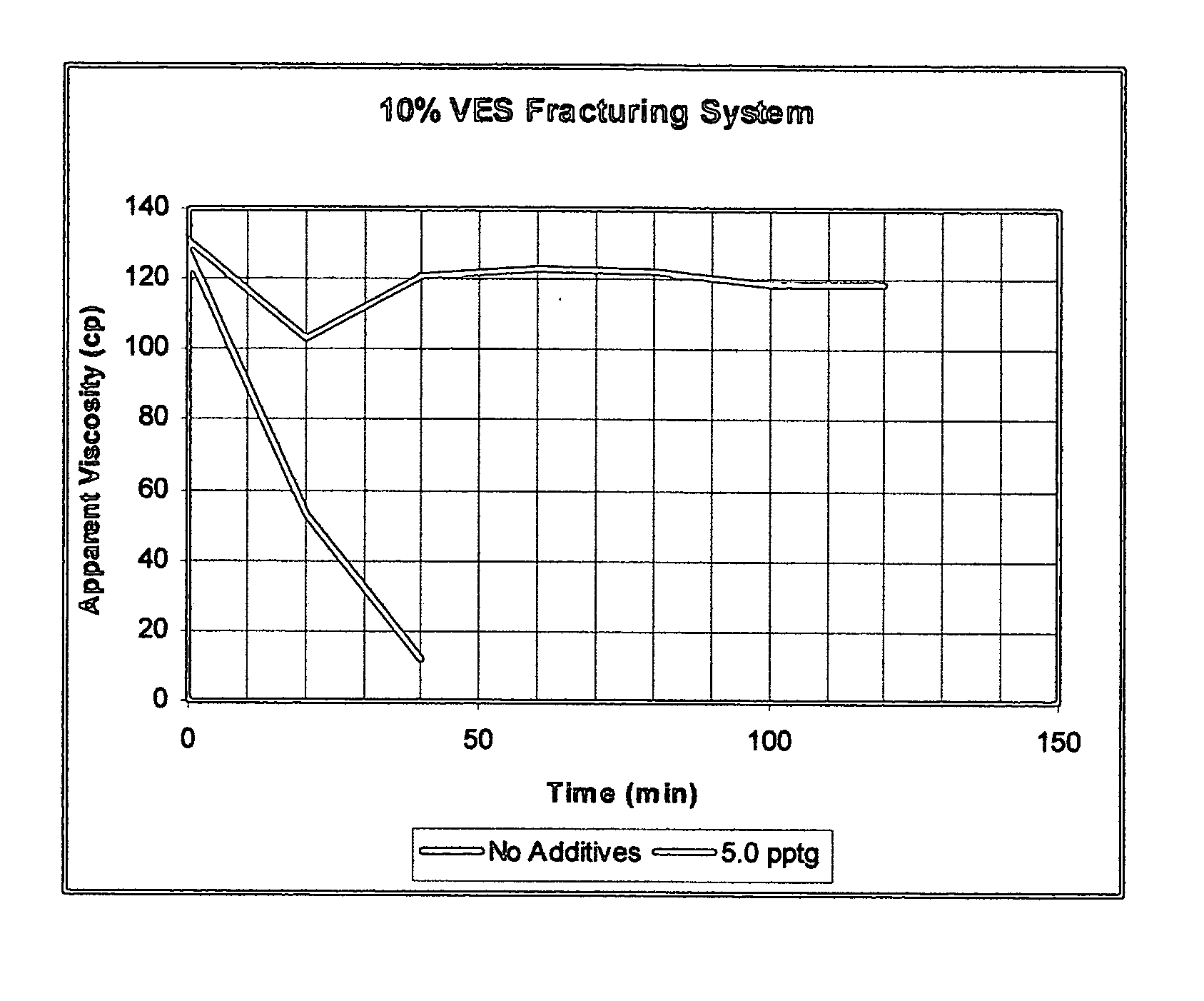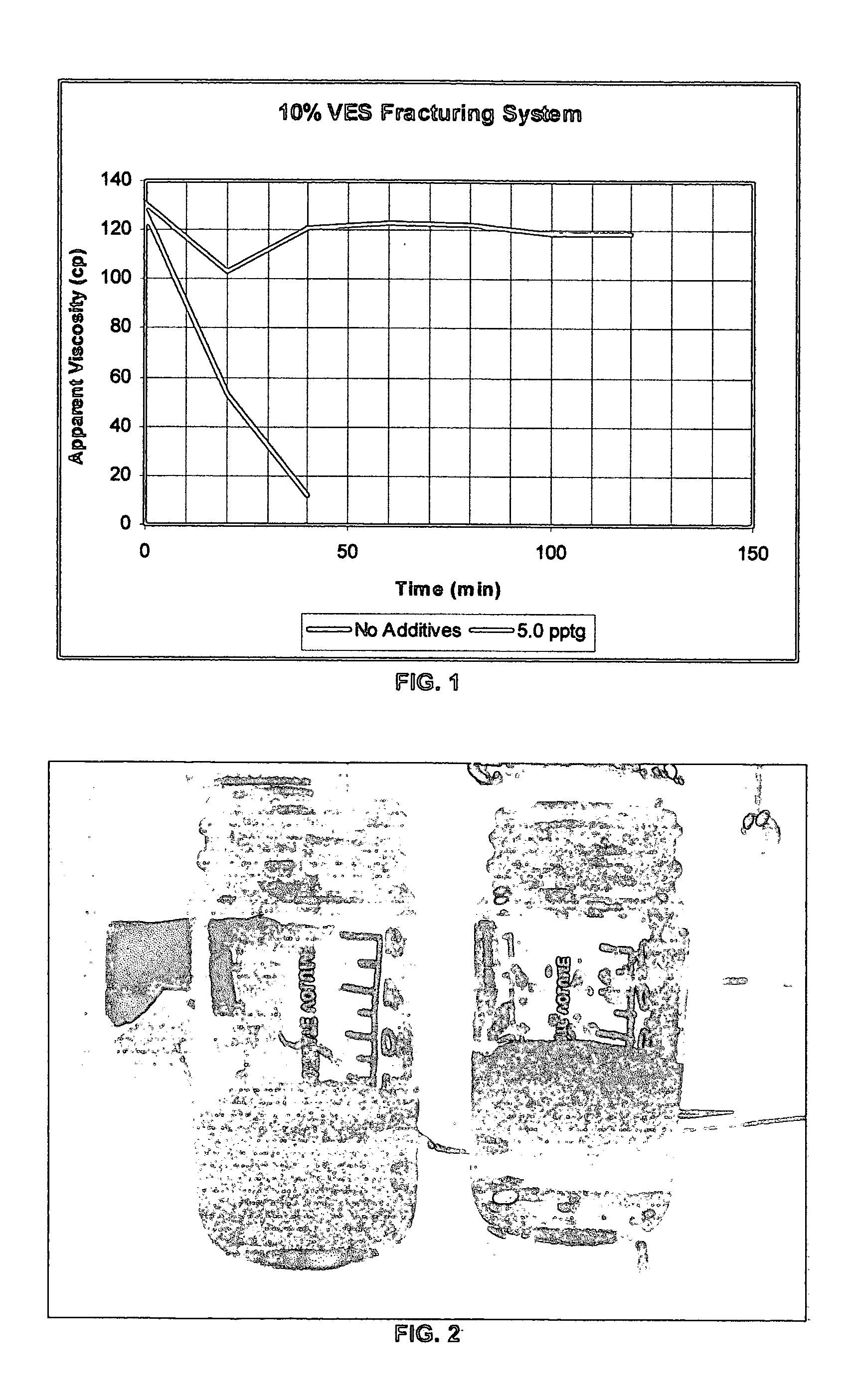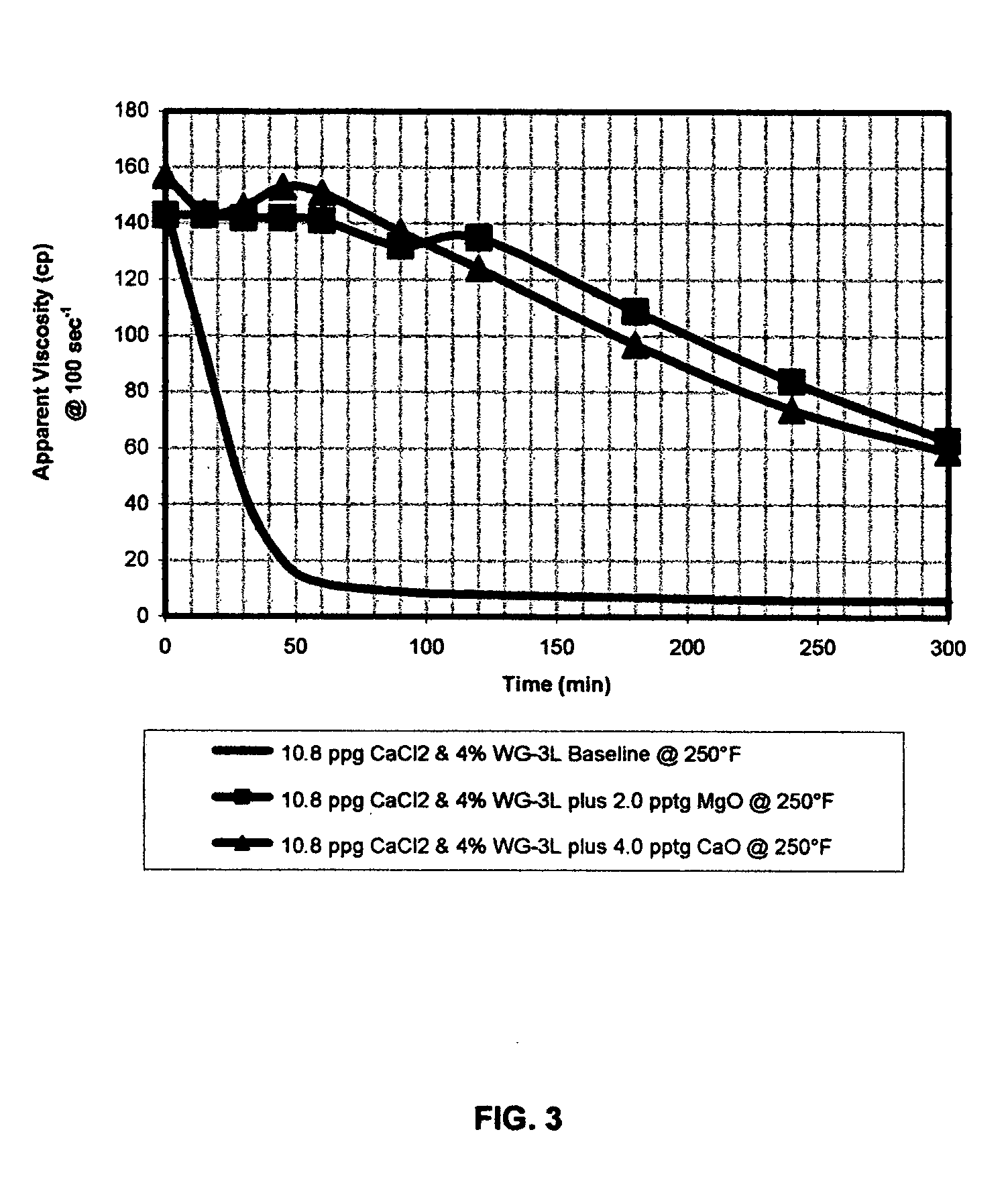System stabilizers and performance enhancers for aqueous fluids gelled with viscoelastic surfactants
a technology of viscoelastic surfactants and system stabilizers, which is applied in the field of viscoelastic fluids gelled with aqueous fluids, can solve the problems of fluid deformation, complex development of suitable fracturing fluids, and inability to close or heal completely, etc., and achieve the effect of reducing precipitation and increasing stability
- Summary
- Abstract
- Description
- Claims
- Application Information
AI Technical Summary
Benefits of technology
Problems solved by technology
Method used
Image
Examples
examples 1-2
[0035] The invention was tested in 10.5 ppg (1.26 kg / liter) calcium chloride brine at 270° F. (132° C.). Example 1 did not contain any alkali earth metal additive. Viscosity was measured on a Grace Instrument Company M5500 HTHP Viscometer at the indicated shear rates at the time intervals indicated in Table I. It may be seen that for each shear rate, the viscosity at this temperature rapidly drops as a function of time. Testing was stopped after only 40 minutes.
[0036] For Example 2, 5.0 pptg (0.6 kg / l) MgO system stabilizer was added to the system of Example 1 and testing at the same shear rates over time was performed. However, it may be seen that the viscosity only decreased slightly over time. Testing was discontinued after two hours since it seemed the treated VES-gelled aqueous fluid was stable. FIG. 1 is a plot of the Example 1 and Example 2 viscosity data as a function of time for the 100 sec−1 shear rate showing the contrast between the two and the great improvement in stab...
example 3
[0037] Two otherwise identical brine fluids having the same VES loading are shown in the photograph of FIG. 2. The fluid on the left contains the magnesium oxide stabilizing additive of the invention while the fluid on the right does not. After being tested at a temperature greater than 200° F. (93° C.), the fluid without the magnesium oxide shows the precipitation of the VES surfactant, whereas the fluid with the magnesium oxide does not show VES surfactant precipitation.
examples 4-6
[0038] The invention was further tested in 10.8 ppg (1.3 kg / liter) calcium chloride brinewith 4% SurFRAQ™ WG-3L VES surfactant at 250° F. (121° C.). Example 4 did not contain any alkali earth metal additive. Examples 5 and 6 used 2.0 pptg (0.24 kg / liter) MgO stabilizer and 4.0 pptg (0.42 kg / liter) CaO stabilizers respectively. Viscosity was measured as indicated for Examples 1 and 2. As can be seen from the data presented in Table II and plotted in FIG. 3, viscosity decreased rapidly with no additive, but only much slower with the additives.
TABLE IIVES Systems with Oxide StabilizersTime (min)511 sec−1170 sec−1100 sec−140 sec−1Example 4: 4% VES in 10.8 ppg (1.3 kg / liter) CaCl2 Brine@ 250° F. (121° C.) (no additives Baseline)0671141462251559829512430253745634512172027608111215906891212067891804671024045683004568Example 5: 4% VES in 10.8 ppg (1.3 kg / liter) CaCl2 Brine@ 250° F. (121° C.) (2.0 pptg (0.24 kg / liter) MgO Stabilizer)071114143211151151331431623011913414215645921231421816088...
PUM
 Login to View More
Login to View More Abstract
Description
Claims
Application Information
 Login to View More
Login to View More - R&D
- Intellectual Property
- Life Sciences
- Materials
- Tech Scout
- Unparalleled Data Quality
- Higher Quality Content
- 60% Fewer Hallucinations
Browse by: Latest US Patents, China's latest patents, Technical Efficacy Thesaurus, Application Domain, Technology Topic, Popular Technical Reports.
© 2025 PatSnap. All rights reserved.Legal|Privacy policy|Modern Slavery Act Transparency Statement|Sitemap|About US| Contact US: help@patsnap.com



